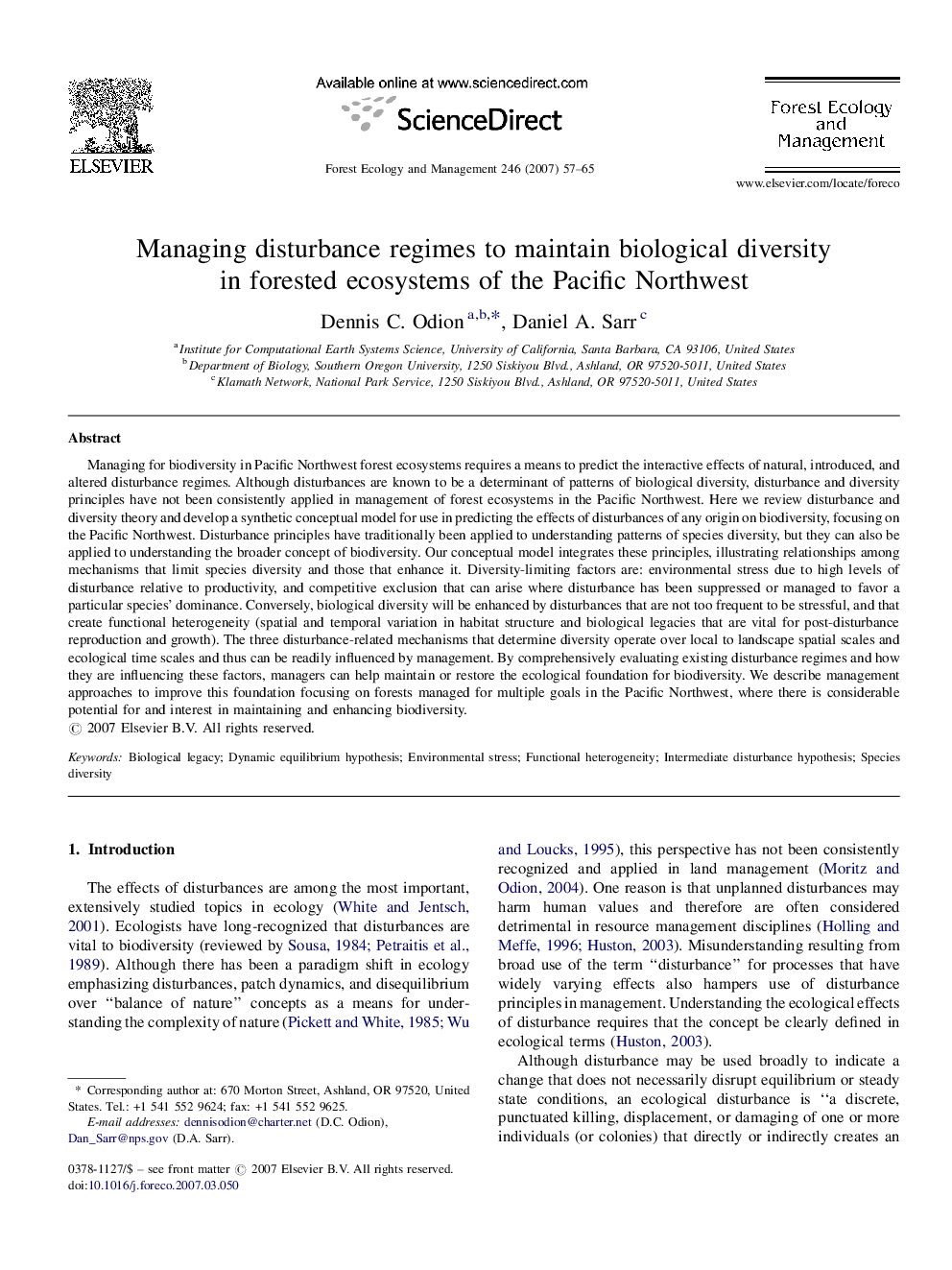| Article ID | Journal | Published Year | Pages | File Type |
|---|---|---|---|---|
| 90562 | Forest Ecology and Management | 2007 | 9 Pages |
Managing for biodiversity in Pacific Northwest forest ecosystems requires a means to predict the interactive effects of natural, introduced, and altered disturbance regimes. Although disturbances are known to be a determinant of patterns of biological diversity, disturbance and diversity principles have not been consistently applied in management of forest ecosystems in the Pacific Northwest. Here we review disturbance and diversity theory and develop a synthetic conceptual model for use in predicting the effects of disturbances of any origin on biodiversity, focusing on the Pacific Northwest. Disturbance principles have traditionally been applied to understanding patterns of species diversity, but they can also be applied to understanding the broader concept of biodiversity. Our conceptual model integrates these principles, illustrating relationships among mechanisms that limit species diversity and those that enhance it. Diversity-limiting factors are: environmental stress due to high levels of disturbance relative to productivity, and competitive exclusion that can arise where disturbance has been suppressed or managed to favor a particular species’ dominance. Conversely, biological diversity will be enhanced by disturbances that are not too frequent to be stressful, and that create functional heterogeneity (spatial and temporal variation in habitat structure and biological legacies that are vital for post-disturbance reproduction and growth). The three disturbance-related mechanisms that determine diversity operate over local to landscape spatial scales and ecological time scales and thus can be readily influenced by management. By comprehensively evaluating existing disturbance regimes and how they are influencing these factors, managers can help maintain or restore the ecological foundation for biodiversity. We describe management approaches to improve this foundation focusing on forests managed for multiple goals in the Pacific Northwest, where there is considerable potential for and interest in maintaining and enhancing biodiversity.
